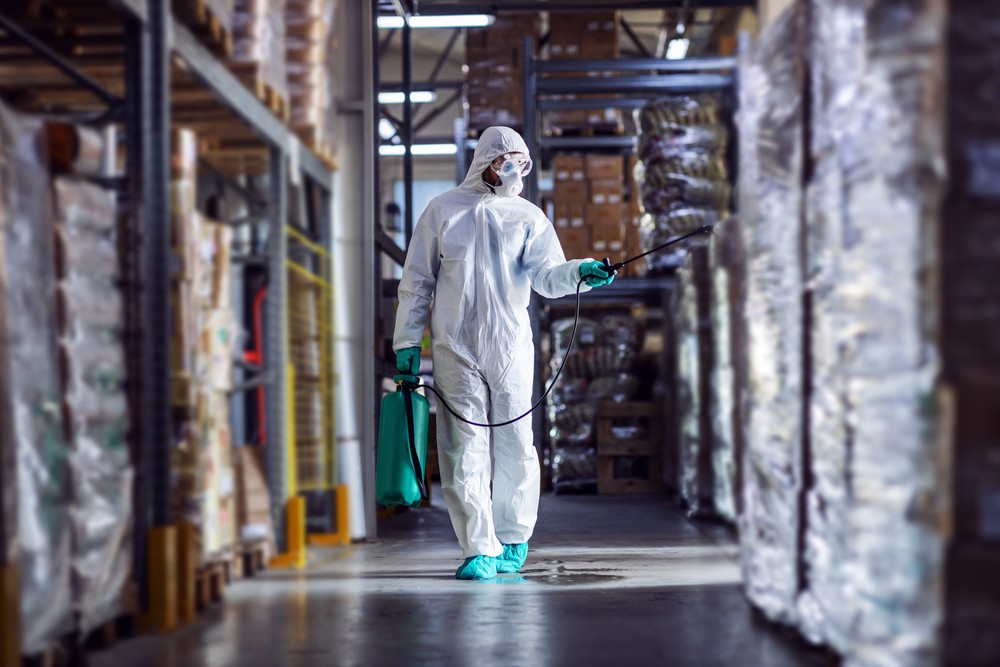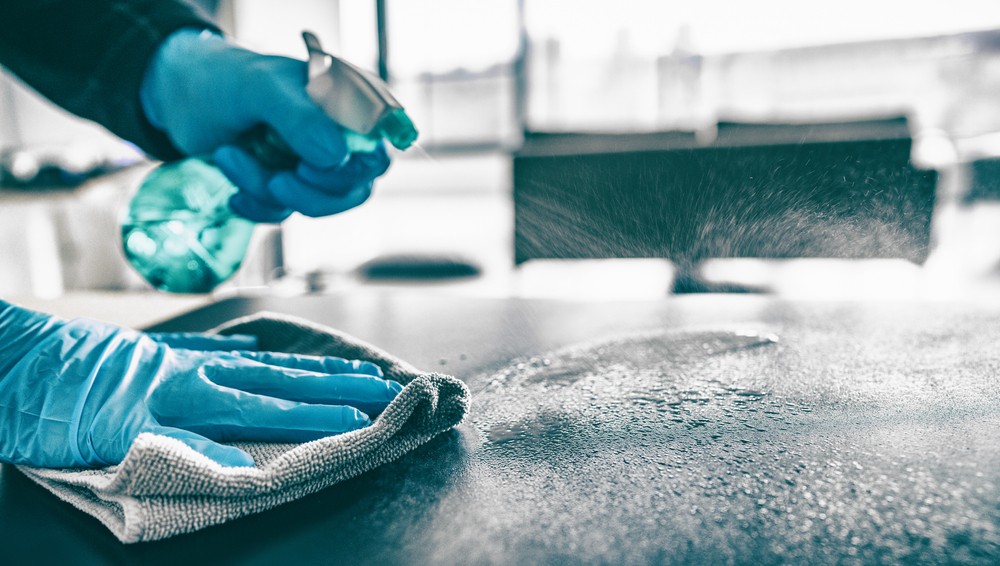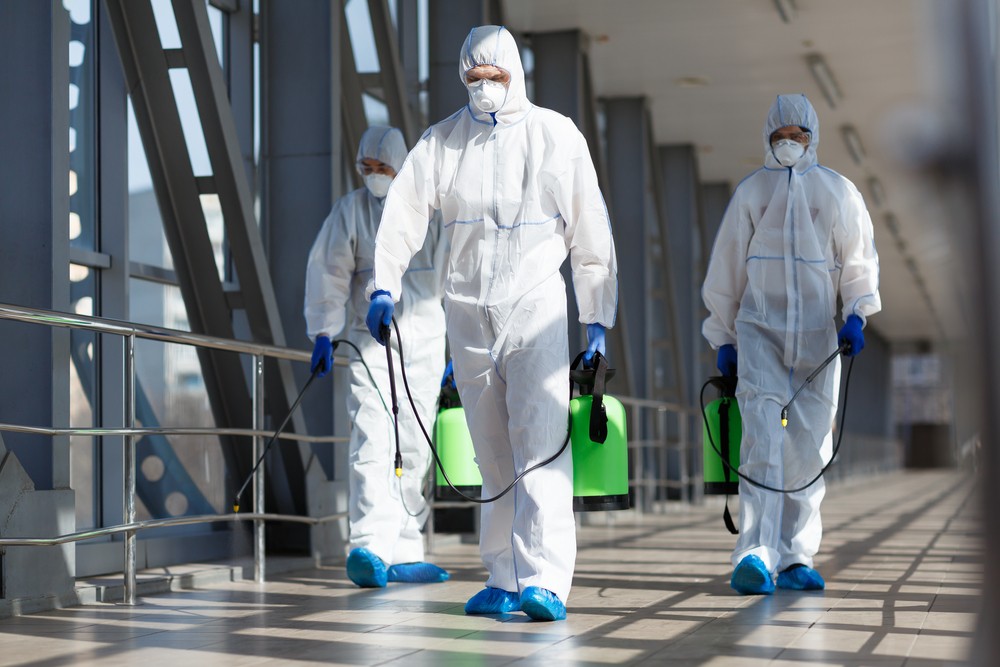Common Disinfection Strategies for COVID-19 on the Factory Floor

As the number of coronavirus cases in the U.S. surges yet again, factories are scrambling to ensure their essential workers are safe and to prevent their facility from becoming a hotspot for infection. Many manufacturers have practiced CDC-recommended disinfection protocol since the beginning of the pandemic. Now, as we learn more about the virus, how it spreads, and its survivability outside the human body, new and refined disinfection methods have come to light. The question is, are they enough to prevent factories from becoming hotbeds?
Manufacturing’s pandemic predicament
Manufacturing has come under fire in some states for its role in super-spreader events, like the recent outbreak at a California chicken plant. However, the manufacturing sector grapples with a precarious situation. As essential workers in an already understaffed industry, factory workers are forced to work long hours to meet the monumental supply demands for the country. Manufacturing’s herculean effort to stay operational during the pandemic is largely the reason the U.S. was able to avoid a more protracted recession.
But with demand for manufacturing comes a higher risk of COVID-19 transmission among workers who spend 10-12 hours each day on the factory floor. Despite mask mandates and social distancing, manufacturers can only do so much to prevent the spread of the virus.

Disinfection is a priority
Although many factories have standards in place for social distancing and personal protective equipment (PPE), transmission also can occur in a surface-to-person capacity. As individuals work long shifts and move from station-to-station or machine-to-machine, they may inadvertently transmit the virus on surfaces such as human-machine interfaces (HMIs), touchscreens, operator controls, keyboards, and more.
Depending on the surface, COVID-19 can live from several minutes to several hours, easily making the leap from surface-to-person in exponential fashion. For this reason, surface disinfection needs to become, and remain, a priority for factory operators. Here’s a look at some of the CDC-approved and proven methods for disinfection.
- Electrostatic spraying. Electrostatic spraying has become widely adopted within the manufacturing sector due to its relative safeness in almost any condition. It’s safe for clean rooms and laboratories, utilizing electrically-charged disinfectant to neutralize particles, even in small spaces or on awkwardly shaped equipment.
- Ultraviolet (UV) light disinfection. UV disinfection is gaining traction as a disinfection method in factories. It’s recommended by the Food and Drug Administration (FDA) and meets compliance standards for even the most stringent factory environments. Handheld disinfectant lamps provide easy maneuverability and can be used by virtually anyone with little to no training.
- Disinfecting wipes. A simple first line of defense against virus transmission from surface to skin, disinfecting wipes provide an on-site solution to wiping down equipment and interfaces. Manufacturers should choose wipes suited for each environment, such as those that won’t interfere with electronics or that are safe for certain surface materials.
In addition, air purification and mandates for employee hand sanitization are effective modes of preventing airborne and contact-to-contact transmission of coronavirus.

Prevention is more essential than ever
We’re headed into cold and flu season, and scientists predict more coronavirus-related trouble during the winter months. Manufacturers need to begin planning for advanced disinfection and cleaning strategies now. Even as the U.S. rides the pandemic to new daily heights of confirmed cases, it’s not too late for factories to protect workers — especially as they become more essential by the day.